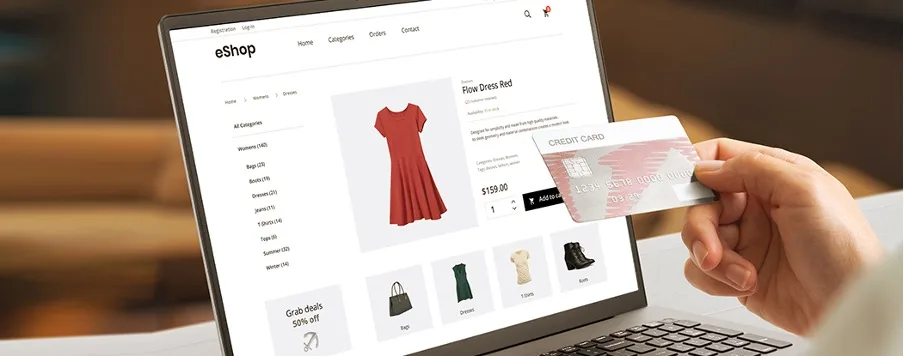The success of an online business today depends heavily on more than just great products and competitive pricing. The way customers interact with a website, the ease of navigation, and the overall satisfaction they feel while shopping online define whether they will complete a purchase or abandon the process. This is where user experience in online shopping websites plays a pivotal role. A well-crafted user experience (UX) builds trust, enhances engagement, and drives long-term customer loyalty, which ultimately shapes the profitability and reputation of an e-commerce brand.
Discover the art of smoking with Tabanero Cigars your premium destination for cigars online. Hand rolled in Nicaragua and shipped with care, each cigar tells a story of craftsmanship and tradition.
Understanding User Experience in E-Commerce
User experience in the context of e-commerce refers to how customers perceive and interact with an online store throughout their buying journey. It includes every touchpoint—from the homepage layout and product search functionality to payment options and customer support. A positive user experience means visitors can find what they need quickly, complete their purchases effortlessly, and leave feeling satisfied.
The Core Elements of User Experience
Effective UX design in online shopping combines functionality, usability, and emotional connection. Key components include:
- Website Usability: Ensures smooth navigation, intuitive menus, and fast page loading.
- Visual Design: Maintains consistency in color, typography, and imagery to build brand identity.
- Content Clarity: Provides concise yet persuasive information that guides purchase decisions.
- Mobile Responsiveness: Optimizes website performance on smartphones and tablets, which are now the primary devices for online shopping.
- Trust and Security: Builds confidence through secure payment gateways and transparent policies.
When these elements are aligned, customers are more likely to stay engaged, explore products, and complete transactions without frustration.
Why User Experience Is Crucial in Online Shopping
In digital commerce, first impressions are everything. Studies show that users decide whether to stay on a website within the first few seconds. If the design feels outdated, confusing, or slow, they move on to competitors instantly. Therefore, creating a seamless and enjoyable user experience directly influences conversion rates and brand perception.
Enhances Customer Retention
Customer retention is one of the most significant benefits of strong UX design. When shoppers have a pleasant experience, they are more likely to return for future purchases. Loyalty is no longer driven solely by price or product quality; it’s built through convenience, ease, and emotional connection. Simple touches like personalized recommendations or easy reordering can make customers feel valued and understood.
Boosts Conversion Rates
Every detail of a shopping website—from product descriptions to checkout flow—impacts conversions. A well-optimized UX minimizes friction at every stage of the buyer journey. For instance, offering one-click checkout, multiple payment methods, and guest login options can reduce cart abandonment. According to research, websites with optimized UX can increase conversion rates by up to 200%, highlighting its importance for revenue growth.
Builds Brand Trust and Credibility
Trust is the foundation of any successful online business. When users see professional design, secure payment icons, and clear return policies, they associate the brand with reliability. On the other hand, poor UX signals carelessness and discourages purchases. Building trust through consistent user experience not only encourages repeat transactions but also inspires word-of-mouth referrals.
Designing for the Modern Online Shopper
Today’s shoppers expect speed, personalization, and simplicity. Their attention spans are short, and they demand instant gratification. Designing for these expectations requires understanding customer behavior and applying data-driven strategies.
Intuitive Navigation and Search Functionality
Navigation is the backbone of online usability. A cluttered menu or confusing category layout can drive visitors away quickly. A user-centric design includes:
- Clear categorization of products (e.g., men’s, women’s, accessories, etc.)
- Visible search bars with predictive text and filters
- Breadcrumb navigation for easy backtracking
- Consistent page layouts that make browsing natural and predictable
Shoppers should never have to think twice about where to click next.
Fast Loading Speed
A website’s speed can make or break the shopping experience. Research indicates that even a one-second delay in load time can decrease conversions by up to 7%. High-quality images are important, but they must be optimized to prevent lag. Techniques such as caching, image compression, and using content delivery networks (CDNs) ensure faster performance.
Mobile Optimization
With more than half of e-commerce traffic coming from mobile devices, mobile-first design is no longer optional. Mobile users expect full functionality, not a simplified version of the desktop site. Responsive design, large touch-friendly buttons, and adaptive layouts ensure smooth experiences across all screen sizes.
The Emotional Side of User Experience
While functionality is crucial, emotional engagement plays an equally powerful role in shaping user perceptions. A well-designed UX appeals not just to logic but also to feelings.
Visual Storytelling
Luxury, comfort, excitement—every brand evokes a specific emotion. Through color schemes, imagery, and typography, an online store can communicate its personality and values. For instance, minimalistic designs with neutral tones often reflect sophistication, while vibrant colors and playful graphics appeal to youthful audiences. Visual storytelling builds an emotional bond that encourages brand loyalty.
Microinteractions and Feedback
Small animations and visual cues such as hover effects, loading indicators, or confirmation messages make the shopping process feel alive. When a user adds an item to the cart and sees an immediate response, it reassures them that their action was successful. These microinteractions create satisfaction and subtly enhance engagement.
Personalization and Customer Connection
Personalized experiences are at the heart of modern e-commerce. Data analytics and AI allow online stores to deliver recommendations based on browsing history, previous purchases, and user preferences. A personalized shopping journey not only increases sales but also strengthens emotional connection, as customers feel the brand understands their needs.
Streamlining the Checkout Experience
The checkout process is often where potential buyers abandon their carts. Complicated forms, hidden costs, or limited payment options create frustration. A well-designed checkout flow eliminates unnecessary steps and reassures users throughout the transaction.
Key Features of a Smooth Checkout:
- Guest checkout options to avoid mandatory account creation
- Visible progress indicators that show how many steps remain
- Auto-fill functionality for returning customers
- Multiple secure payment options, including digital wallets
- Transparent cost breakdown with shipping and taxes displayed upfront
By removing barriers, businesses can significantly increase completed transactions and overall customer satisfaction.
The Role of Accessibility in User Experience
An inclusive design ensures that all users, including those with disabilities, can interact with the website effectively. Accessibility is both an ethical responsibility and a business advantage, as it widens the potential customer base.
Accessibility Features to Implement:
- Alt text for all images
- Keyboard-friendly navigation
- Readable font sizes and color contrast
- Screen reader compatibility
- Captioned videos and clear error messages
Designing for accessibility not only meets legal standards but also enhances usability for everyone.
The Role of Analytics and User Feedback
User experience should never remain static. Consumer behavior changes constantly, and so must design strategies. Continuous monitoring and feedback collection allow businesses to refine UX and stay ahead of expectations.
Heatmaps and Behavior Analysis
Heatmaps visually display where users click, scroll, or pause on a webpage. They help identify which elements attract attention and which cause confusion. Insights from heatmaps guide decisions about layout improvements, call-to-action placements, and content prioritization.
A/B Testing
A/B testing compares two versions of a webpage to determine which performs better. This method allows data-driven decisions regarding color schemes, button placement, or text length. Gradual improvements based on testing ensure that the UX evolves with customer needs.
Customer Reviews and Surveys
Encouraging customer feedback through post-purchase surveys helps identify pain points. Direct insights from users reveal issues that analytics might overlook, allowing for more empathetic and human-centered design solutions.
The Business Impact of Good UX
Investing in user experience delivers measurable business benefits. Beyond immediate sales, good UX contributes to long-term growth and brand authority.
Reduced Bounce Rates
A fast, engaging, and easy-to-navigate website keeps visitors exploring longer. Lower bounce rates signal search engines that the site provides value, improving organic rankings and visibility.
Increased Average Order Value (AOV)
Cross-selling and up-selling features within an intuitive UX can encourage shoppers to add complementary products to their carts. Smart recommendations and related product displays directly increase the average order value.
Stronger Customer Advocacy
Satisfied customers often become brand advocates. A positive online experience encourages them to share reviews, recommend the brand, and promote it on social media, driving organic growth and trust.
The Future of User Experience in Online Shopping
The next evolution of e-commerce UX will be driven by personalization, technology, and emotional design. Artificial intelligence, augmented reality, and voice-enabled shopping are already shaping the future landscape.
AI-Powered Personalization
AI will continue refining recommendations by understanding individual shopping patterns. Virtual shopping assistants will provide real-time help, guiding users as human staff would in physical stores.
Immersive Shopping with AR and VR
Augmented and virtual reality will make online shopping more interactive. Shoppers will virtually “try on” clothes, visualize furniture in their homes, or explore 3D store environments, bridging the gap between digital and physical experiences.
Voice and Conversational Interfaces
Voice search and conversational AI are becoming integral to UX. Customers will soon complete entire purchases through voice commands, creating a more natural and effortless interaction.
FAQs
Q1: Why is user experience more important for online shopping than other types of websites?
Because online shoppers make quick decisions based on ease and trust, even minor friction in the buying process can lead to lost sales. A seamless UX ensures customers complete their purchases confidently.
Q2: How can small businesses improve their website’s user experience?
Small businesses can focus on clear navigation, mobile optimization, fast load times, and secure checkout systems. Collecting customer feedback also helps refine the experience continuously.
Q3: What is the difference between UX and UI in e-commerce?
UX (User Experience) is the overall feeling a user has while interacting with the website, while UI (User Interface) refers to the visual design elements like buttons, icons, and layout that enable interaction.
Q4: How does user experience affect SEO?
Good UX leads to longer session durations, lower bounce rates, and higher engagement—signals that search engines use to rank websites higher in results.
Q5: What future trends will shape UX in online shopping?
Personalization powered by AI, immersive AR/VR experiences, and voice-enabled shopping are emerging trends that will define the next generation of e-commerce experiences.
In the competitive world of digital retail, user experience in online shopping websites is not merely an option but a necessity. A thoughtful, customer-centric design converts casual visitors into loyal buyers by merging convenience with emotional engagement. As technology continues to evolve, businesses that prioritize UX will lead the market, offering not just products but complete, meaningful shopping experiences that keep customers coming back.













